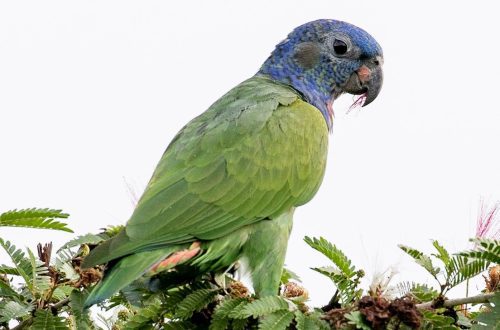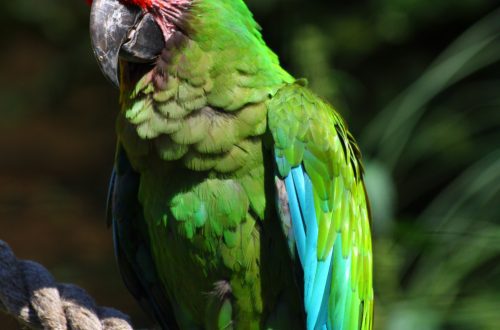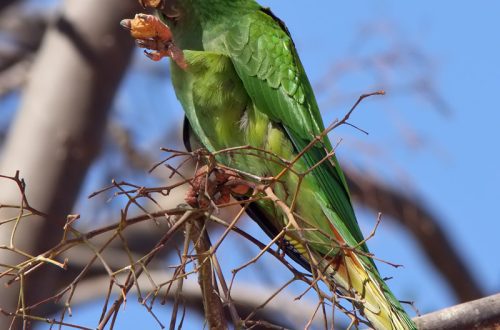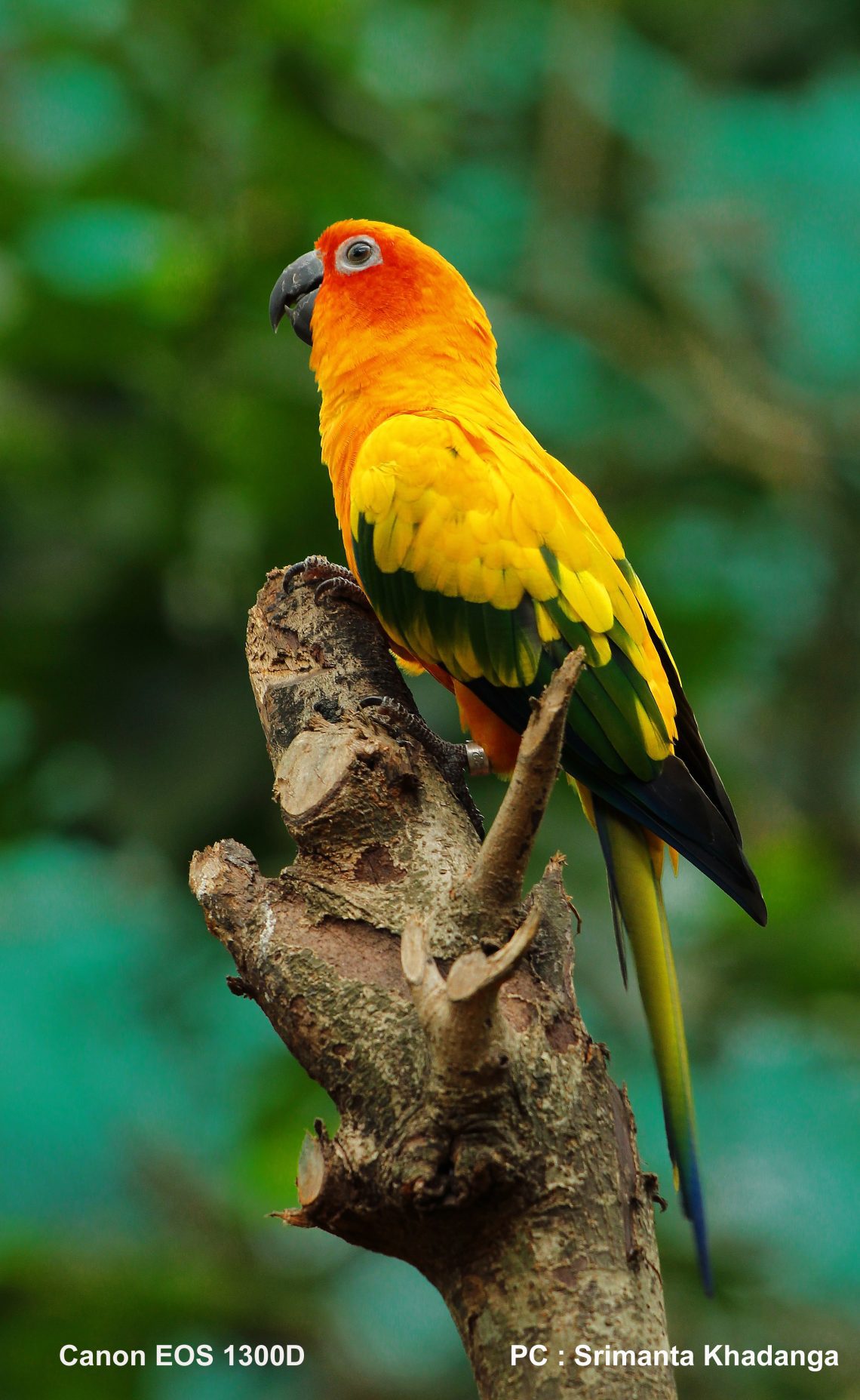
Aratinga
The genus Arating includes more than 20 species, these birds are often kept as pets. They are loved for their bright colors, funny disposition and intellectual abilities. Aratinga live quite a long time (about 20 – 30 years), they are hardy, breed well in captivity. These parrots are quite unpretentious and do not require any exclusive diet and conditions.
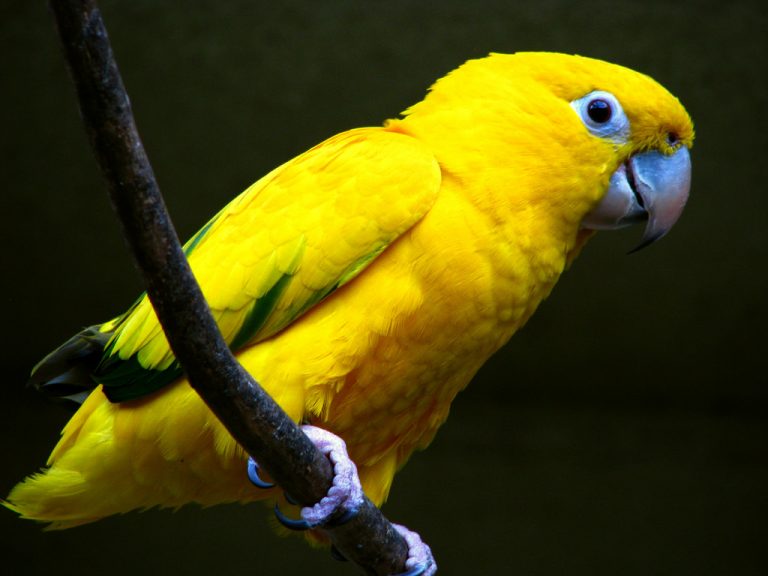
In the photo: aratinga parrot. Photo source: https://popugai.info
However, parrots of this kind have one rather unpleasant minus – their voice. The screams of arating up to decibels can be compared to the noise of a jackhammer or a lawn mower. How do you like this neighborhood? The voice of the aratinga is shrill and very loud, therefore they are often recommended to be kept in outdoor enclosures. If there are several birds, there will be twice as many sounds, respectively.
If this does not scare you, then the aratinga will become a great friend and pet for you for many years, because they are easily tamed and will delight the owner with their tricks. In addition, many aratingas can be trained to imitate speech and some sounds. The ability to imitate these parrots is rather modest, but it is quite possible. Another feature should be attributed to their destructive beaks. If you do not provide them with the desired material, furniture, wallpaper, etc. may be used.
Maintenance and care of aratingas
To keep arating, you need to use strong cages, and preferably aviaries, where the bird can live an active life. The minimum cage size is 60x60x100 cm, but the larger it is, the better. If you plan to leave the bird alone for a long time, then it is better to immediately think about acquiring a pair of birds, and they do not have to be of the same species. Aratingas are quite friendly to medium-sized parrots (rosellas, cockatiels, monks, etc.), but they need to be kept in different cages, to introduce them correctly.
In the cage of the aratinga, perches with bark of the correct diameter should be installed. Be prepared to replace them, as birds can quickly render them unusable. Perches are best placed at different heights. In addition, feeders should be installed in the cage. Aratingas are quite strong birds and easily turn over and even gnaw plastic feeders, therefore it is better to place metal or even heavy clay ones in the cage that can stand on the floor and the bird will not turn them over. The same applies to drinkers, they must be quite durable. Among other things, there must be toys in the cage. It should not only be ropes and pieces of wood, the aratingas will really like puzzles, especially the birds will appreciate the caps, where something tasty will be hidden.
Offer the birds a bathing suit or place it in a cage if space permits. However, remember that the aratingas are “dirty” and everything that you give the bird from food will be scattered not only in the cage, but also in the surrounding area. In addition, aratingas like to soak their food in a drinking bowl. Toys will be turned into chips, feeders turned over.
If you place a stand with toys and various amusements for the parrot outside the cage, the bird will be happy and your furniture will be intact.
Feeding arating
The diet of an arating should be quite varied. Feeding arating includes a grain mixture for medium and large parrots. The grain mixture should include canary seed, various varieties of millet, some oats, buckwheat, sunflower and safflower. Offer sprouted and steamed grains, corn. Do not forget about green food for arating – various types of lettuce, chard, wild cereals, dandelions, woodlice. Vegetables, fruits, berries (apple, carrot, broccoli, pear, orange, banana, pomegranate, cactus fruits, green peas, beans, celery, etc.). Nuts should be given in limited quantities as a treat. Be sure to include branch forage in your diet.
There should be sources of minerals in the cage – a mineral mixture, sepia, clay, chalk.
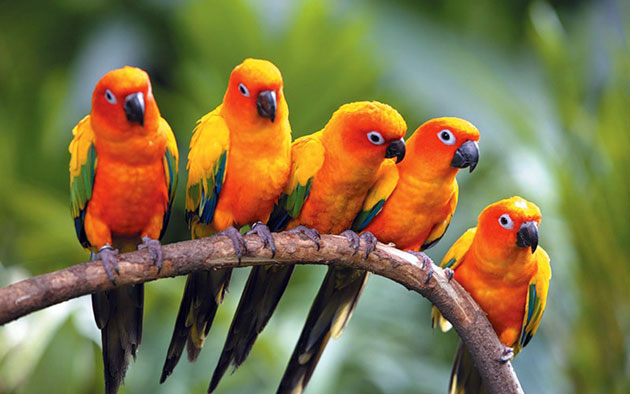
In the photo: aratinga parrots. Photo source: https://simple-fauna.ru
Breeding arating
Aratingas in nature breed in hollows, therefore, if you plan to breed these birds in captivity, you need to make a nesting house with dimensions of 30x30x60 cm and a 9 cm entrance.
Unfortunately, the gender of arating cannot be determined by external signs; females and males have the same color. Sometimes even by behavior it is difficult to understand who is in front of you. In most cases, genetic analysis will help.
For breeding, you need to pick up sexually mature individuals (at least 3 – 4 years old) of different sexes, not related to each other. Birds should be moderately well-fed and healthy. For breeding, it is necessary to move the birds to a spacious aviary, gradually increase the daylight hours to 14 hours and introduce food of animal origin into the diet, not excluding a varied daily menu, greens and branch food. It is desirable that the preparation lasted about a month.
Aratingas are quite strongly attached to each other and create strong couples for life.
Wood shavings should be placed in the suspended nest box. The clutch usually contains 3 to 5 eggs. The females incubate the clutch. The male at this time feeds the partner and guards the nest. Chicks are born covered with light fluff, blind and helpless. They are fed by both parents. At the age of about 2 months, already covered with feathers, the chicks leave the nesting house. As soon as they become completely independent, they can be planted and tamed.



